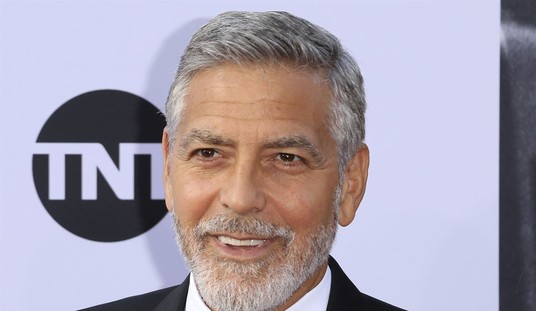That’s the new target date for the Pfizer vaccine, but Moderna’s perhaps only a week behind. Health and Human Services Secretary Alex Azar provided a briefing on Operation Warp Speed this afternoon, telling reporters that the distribution channels for COVID-19 vaccines are primed for an immediate rollout. All that awaits is emergency-use authorization from the FDA, Azar stated, and that means vaccines could be in the hands of providers in every sector of the country starting “soon after” December 10, just slightly over two weeks from today.
The first target — nursing homes, where the most vulnerable live, an operation which CVS will take the lead:
“If all goes well, we could be distributing vaccine soon after Dec. 10,” Azar said during an Operation Warp Speed briefing on Tuesday.
“We believe we can distribute vaccine to all 64 jurisdictions within 24 hours of FDA authorization. Then we hope administration could begin as soon as the product arrives,” Azar said. “One of the private sector partners we’ve enlisted, CVS Health, has said that they expect to be vaccinating residents of nursing homes — one of the top priority groups — within 48 hours after FDA authorization.”
CVS certainly has the footprint for such an operation. As of two years ago, it had nearly 10,000 locations, far more than — say — the CDC or state departments of health. Operation Warp Speed’s decision to embrace the private sector is about to pay off in distribution just as it did in R&D and production.
Even better, Azar explains that Operation Warp Speed has been running “field tests” for distribution in order to move quickly and efficiently right off the bat. Presumably CVS is part of the dry runs, which will continue this week:
The U.S. federal government is conducting a practice run this week of its coronavirus vaccine distribution networks with some test shipments as the drugs await emergency approval from the U.S. Food and Drug Administration in “just a few weeks.”
The dry run is part of a series of field exercises under the Trump administration’s vaccine program Operation Warp Speed, Health and Human Services Secretary Alex Azar told reporters during a press briefing Tuesday. The shipments, which won’t contain the actual vaccine vials, will test the systems used by state health departments to order vaccine doses to “ensure that all goes smoothly,” Azar said.
How many vaccines will the nursing-home operation take? As of 2016, the CDC estimated that the US had 15,600 licensed nursing homes, with 1.7 million licensed beds. At that time, 1.3 million were occupied, but let’s say it’s now at 1.7 million. That would take up 3.4 million doses for the two-stage protocol required by Pfizer and Moderna. Pfizer supposedly has enough produced already for 20 million doses. Where do the rest of those go?
That’s where this is about to get tricky, perhaps in more ways than one. The CDC and HHS have a panel named Advisory Committee on Immunization Practices (ACIP) to “recommend” policies and protocols on vaccinations. USA Today reports that distribution and access decisions may come down to the committee:
ACIP develops recommendations on the use of vaccines, and at least two big pharmaceutical firms could be just weeks away from funneling their products across the U.S. On Monday, the committee unveiled its ethical principles for an orderly distribution of the vaccines, beginning with an estimated 21 million health care workers.
Other groups at or near the front of the line include other essential workers such as first responders, teachers, farmworkers and energy industry workers; people with high-risk medical conditions; and people over 65. …
ACIP consists of 15 experts who are voting members primarily responsible for the vaccine recommendations. The secretary of the U.S. Department of Health and Human Services selects the committee through an application and nomination process.
Fourteen of them have expertise in vaccinology, immunology, pediatrics, internal medicine, nursing, family medicine, virology, public health, infectious diseases or preventive medicine. One member is a consumer advocate providing perspectives on the social and community aspects of vaccination.
In addition to the voting members, there are 30 non-voting representatives from professional organizations that are highly regarded in the health field. They comment on ACIP’s recommendations and offer the perspectives of groups that will implement the recommendations.
So initial access will be determined by an unaccountable and barely-known board? Well, not entirely, but the alternative might not be an improvement:
HHS Sec. Alex Azar downplays ACIP prioritization of vaccine distribution, which put essential workers above 65yo/high risk:
"At the end of the day, that is a decision (for) the US government to make."
Says up to governors where to ship and to whom the vaccine is given.
— Anjalee Khemlani (@AnjKhem) November 24, 2020
Upside: Governors are accountable to voters for these decisions in the long run. Downside: In the short run, we have Andrew Cuomo, Gavin Newsom, and a few other assorted mediocrities-or-worse in charge of these decisions. We might be better off with the ACIP, but it’s pretty likely that the governors will think so, too.
All of this may be rendered academic by the sheer volume of vaccines HHS anticipates. With AstraZeneca readying itself for approval and Johnson & Johnson wrapping up their Phase 3 trials soon, we may have four manufacturers with hundreds of millions of already-produced vaccines hitting the market every month between January and the end of spring. That’s why Azar and others think we can hit herd immunity the right way by June, as everyone who wants a vaccine should have access to one well before then. Who gets it first might not matter much at all, as long as people continue to act responsibly in the meantime.
That also relies on a successful transition to the incoming administration. Azar has good news on that score as well. This shows that HHS has its priorities straight in that regard as well.








